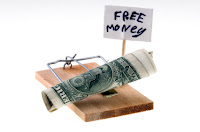Orcun Kahyaoglu
The main reasons of the financial crisis are the
overrated securities and the borrowers’ incapability of paying. There were no verification
of income or assets of the borrowers. Moreover, the securities were rated as they were not
that much risky. Securitization of these high-risk sup-prime mortgage loans would bring
the end of U.S. financial system unless the government helped the institutions. No one predicted that a recession could have destroyed $11 trillion of Americans’ net worth.
The Wall Street Side
Wall Street stands for big businesses, financial institutions and corporations while Main
Street refers to small businesses, locally owned businesses and banks. In the movie it says
Wall Street is greedier than Main Street. Skousen states “Wall Street is not Main Street.
In other words, the business of investing is not the same as investing in a business.”
(2007). Americans also think that government rescued Wall Street and had more
concentration on Wall Street than Main Street.
In 2008, the Wall Street risks started to take actions. The ones who realized that credit derivatives could be used to trade loan risks is the J.P. Morgan team. That idea was thought to make the financial system safer. This will create big problems later. The collateralized debt obligations (CDO), synthetic CDO's, credit default swap, and predatory lending were the major tools of the financial institutions in those years. Lloyd Blankfein, CEO of Goldman Sachs states that a CDO is a pool of assets that can be sliced and in a synthetic,
you pool reference securities that are indexed to specific more pools of mortgage. On the other hand, by credit default swap, many investors were able to invest in some entities that they had
not had access to before. This was a new creation, which brought a broad change in the
entire marketplace. People tried to create something that has a high rating and a high
yield. Moreover, the mortgage lobby opposed the legislations about predatory lending. The chance of
avoiding the drawbacks of these predatory mortgages has passed in the early 2000s.
Everything started to go wrong and a government reform on the problems was needed at
that time. That’s why the Glass-Steagall Act was repealed.
Skousen, M. (2007). Forbes. Wall Street vs. Main Street. Retrieved from:
http://www.forbes.com/2007/10/31/book-‐excerpt-‐investing-‐oped-‐
cx_ms_1101skousen.html


No comments:
Post a Comment